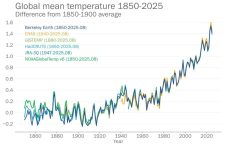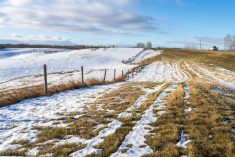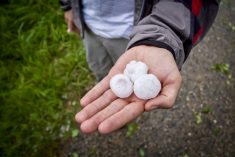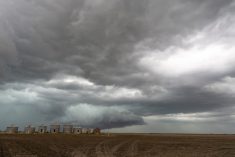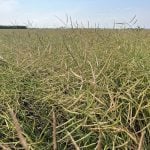While part of southern Manitoba was getting up to an inch of rain on Sept. 16, a second system was forecast to bring additional precipitation further to the west, according to Drew Lerner of World Weather Inc. in Overland Park, Kan.
In addition, Lerner said rain for the United States Northern Plains and Midwest will depend on the specific area. Also, he stated a full-blown La Nina is very unlikely to occur going into winter.
Lerner explained that second system, forecast for Sept. 18-19, is to bring one to 2.5 inches of rain to much of western Saskatchewan.
Read Also

U.S. grains: Soy hits 17-month high, corn to four-month top as trade braces for U.S. data
Chicago Board of Trade soybean futures rose on Thursday to their highest in nearly 17 months as traders awaited a U.S. government crop report that was expected to lower yield estimates, while also bracing for the resumption of export data to give clues on Chinese buying.
“The moisture is really needed, but it’s going to cause some significant delays to field work,” Lerner commented. “A lot of that area that’s going to be impacted received last week’s rain. So some areas are going to be a little too wet.”
The forecaster said the rest of the Prairies will receive less rain.
“The rain will be lighter than normal in eastern Saskatchewan and northwest Manitoba, and probably lighter than normal the Peace country, in the Swan Hills and Slave Lake area in northwest Alberta. Everybody else will be near normal,” he added.
For the U.S., Lerner said the Northern Plains will receive much of the same weather. The central area of Montana will likely get rain while there’s a dry bias for eastern part of the state and extending into the western part of North Dakota.
“We will see a fair amount of moisture in Minnesota and the eastern part of North Dakota,” he added, noting there are to be light showers for South Dakota.
As for the U.S. Midwest, Lerner predicted normal rainfall for the eastern half of the Corn Belt, while the western half is to get “a couple of rounds of precipitation with some disruption of farming activity. But it shouldn’t be so great that they can’t get anything done.”
While the National Oceanic and Atmospheric Administration continued to be “aggressive” in predicting a La Nina, Lerner pointed to the outlook from the Australian Bureau of Meteorology which stated there isn’t going to be one.
“I believe we will have La Nina-like conditions, but a full blown La Nina is not my forecast,” he stated.
Lerner expects cooler than normal weather on the Canadian Prairies when winter is close, with southern Alberta and southwest Saskatchewan to get above normal snowfall, with amounts closer to normal elsewhere.
“I do not think La Nina is going to have a big dominating influence on the world,” he forecast.





